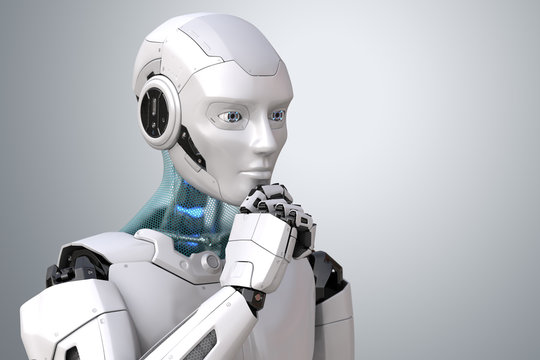What once sounded like a scene from a sci-fi movie is now turning into reality: humanoid robots are entering the workforce. From receptionists and warehouse assistants to hospital aides and even fast-food servers, these lifelike machines are no longer confined to labs or exhibitions. As artificial intelligence (AI), robotics, and automation evolve at lightning speed, businesses across the world are experimenting with humanoid robots to tackle labor shortages, reduce costs, and improve efficiency.
Humanoid robots are robots designed to resemble and mimic human behavior and appearance. Equipped with advanced sensors, cameras, AI software, and mobility systems, they can perform a range of physical and cognitive tasks — from lifting objects and guiding customers to answering questions and recognizing emotions.
Tech giants like Tesla (with Optimus), Boston Dynamics, Agility Robotics, and startups like Figure AI have been making waves with real-world demonstrations of humanoids walking, talking, and working alongside humans. Their recent commercial pilots show robots stacking shelves, delivering packages, and even walking autonomously through dynamic environments like retail stores and hospitals.
What’s driving their adoption? A shrinking labor force, rising operational costs, and an increased push for automation in repetitive or hazardous roles. Humanoid robots are not only a technological breakthrough — they’re also seen as a practical response to modern business challenges.
Where Are Humanoid Robots Being Deployed?
As humanoid robots become more capable, businesses across the globe are beginning to integrate them into real-world environments. These deployments are not just experimental — they’re solving real problems in industries facing labor shortages, high turnover, and increasing pressure for automation. Here’s a closer look at where humanoid robots are making an impact:
🛒 Retail and Customer Service
Retailers in countries like Japan, the U.S., and South Korea are using humanoid robots to enhance customer experience and reduce the workload on human staff. These robots are programmed to:
- Greet and guide customers as they enter the store
- Answer frequently asked questions (e.g., “Where is the dairy section?”)
- Monitor inventory levels and alert staff about low stock
- Handle basic restocking tasks in quiet periods
Retailers report that these robots not only help reduce customer wait times but also attract attention and engagement, turning them into marketing assets.
🏥 Healthcare and Elder Care
Hospitals and elder care facilities are turning to humanoid robots to support overstretched staff and improve patient care. Their roles include:
- Assisting nurses by delivering medications or medical equipment
- Helping patients navigate hospital corridors
- Providing companionship and emotional support to elderly patients
- Reminding patients to take medication or attend appointments
Some robots are even equipped with AI that allows them to detect changes in facial expressions or vocal tone — offering early signs of distress or illness.
📦 Warehousing and Logistics
In high-pressure logistics environments, like those operated by Amazon, humanoid robots are being tested for their ability to work alongside humans without needing redesigned spaces. Their capabilities include:
- Lifting and moving packages of various sizes
- Scanning inventory barcodes
- Navigating autonomously through warehouses using computer vision
- Operating safely in mixed environments with human workers
Unlike fixed-arm robots, humanoid robots can walk, bend, and use shelves designed for human use — which reduces the need for expensive modifications.
🍔 Hospitality and Food Service
The hospitality industry is experimenting with humanoid robots to offer contactless service, faster check-ins, and unique guest experiences. Their duties range from:
- Welcoming guests at hotel receptions
- Carrying luggage to rooms
- Taking orders and serving food at cafes and fast-food restaurants
- Cleaning tables or delivering room service
With rising demand for 24/7 service and fewer available workers, humanoid robots provide a consistent, non-fatiguing option for many hospitality businesses.
Challenges and the Road Ahead
Despite the excitement, several technical, ethical, and social hurdles remain. Humanoid robots are expensive to build and maintain. Their decision-making in unpredictable environments is still limited, and their presence raises important questions about job displacement, privacy, and human-robot interaction.
Critics argue that widespread adoption could lead to unemployment in entry-level or low-skill jobs. On the other hand, proponents believe robots will augment human workers, not replace them — handling the dull, dirty, and dangerous tasks while people focus on creativity and problem-solving. Governments and tech leaders are already discussing regulations, workforce retraining programs, and ethical AI design to ensure these machines benefit society as a whole. Meanwhile, the robotics industry continues to evolve, with AI breakthroughs like GPT-style models and multimodal vision systems powering even more capable and responsive robots.
Humanoid robots are no longer a futuristic fantasy — they’re here, and they’re clocking in. As industries explore new ways to blend human intelligence with robotic precision, the workplace of tomorrow may look very different from today. Whether they walk beside us, serve us coffee, or assist in surgeries, one thing is clear: humanoid robots are reshaping the future of work.








